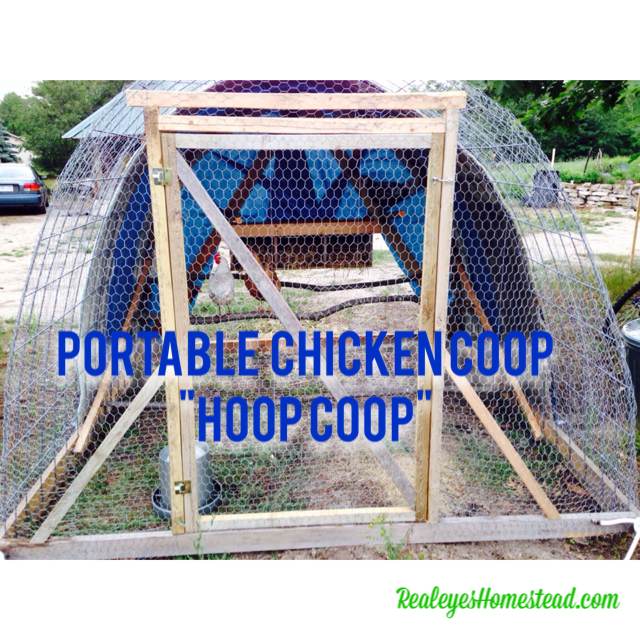In our dream world, all animals on our farm would be free-range. They would just choose to stick around and provide for us because life is so good here. Well that’s how our egg-laying hens did reside here for over a year. But recently our hens began disappearing one by one. We determined it was an aerial predator, but lost most of our flock in the process. We finally resolved to confine them for their protection, but wanted them to still have access to abundant grass and bugs from the land. Based on a little research, a portable “Hoop Coop” chicken tractor looked like just the sort of domicile our birds deserve.
We used locally harvested black locust 2x6s for the skids, or skis that the whole coop slides across the ground on. Black locust is extremely rot resistant, so it will last a long time despite direct contact with the moist ground. Within the 9×9 frame we created, we bent two 16ft cattle panels over to create the hoop shape, and secured them with fence staples. Then we used 2×2 lumber (2×4 split in half) to build some simple framing for a door on one end, and an A frame with nest boxes on the other end.
We then covered the whole thing in 1 inch chicken wire to keep the birds in, and predators out. Staples secured the chicken wire to the frame, and some thin wire was used to secure it to the cattle panels. Half the coop should be covered to provide shelter from the rain and sun. To do this we used a 20x16ft tarp. But first, we laid some old carpet over the sharp parts of the wire hoop so that the tarp wouldn’t tear in the wind. We then secured the tarp using long, half inch strips of wood screwed to the frame. (The tarp was trimmed.)
After this, we harvested some dogwood poles from the swamp to act as roosts for the birds to sleep on. We added a water container and a large bin filled with dirt and diatomaceous earth for them to take dust baths in. The chickens dust bath to reduce the presence of mites in their feathers. The diotomaceous earth aids in this because it has very sharp structure which injures small arthropods, while not harming us larger animals. Food-grade DE can be purchased at pet stores or feed stores.
Each morning we drag the coop onto new ground so the hens have fresh greens and bugs to pick through. We also supplement their diet with some non-GMO grain feed that’s soy and corn free. While life in captivity takes some getting used to, the hens have begun laying in their nest boxes and so far no predator has run off with any more of our feathered friends.
We’ll also be using this coop to raise meat chickens for a couple months this summer. Our goal is to stock our freezer for the year with healthy meat that’s a lot more affordable than what you can find for sale.
Hope you found this info useful, we’ll update it as we use the coop more and work out any kinks along the way. Don’t forget to Like us on facebook, and share this article with your friends!

